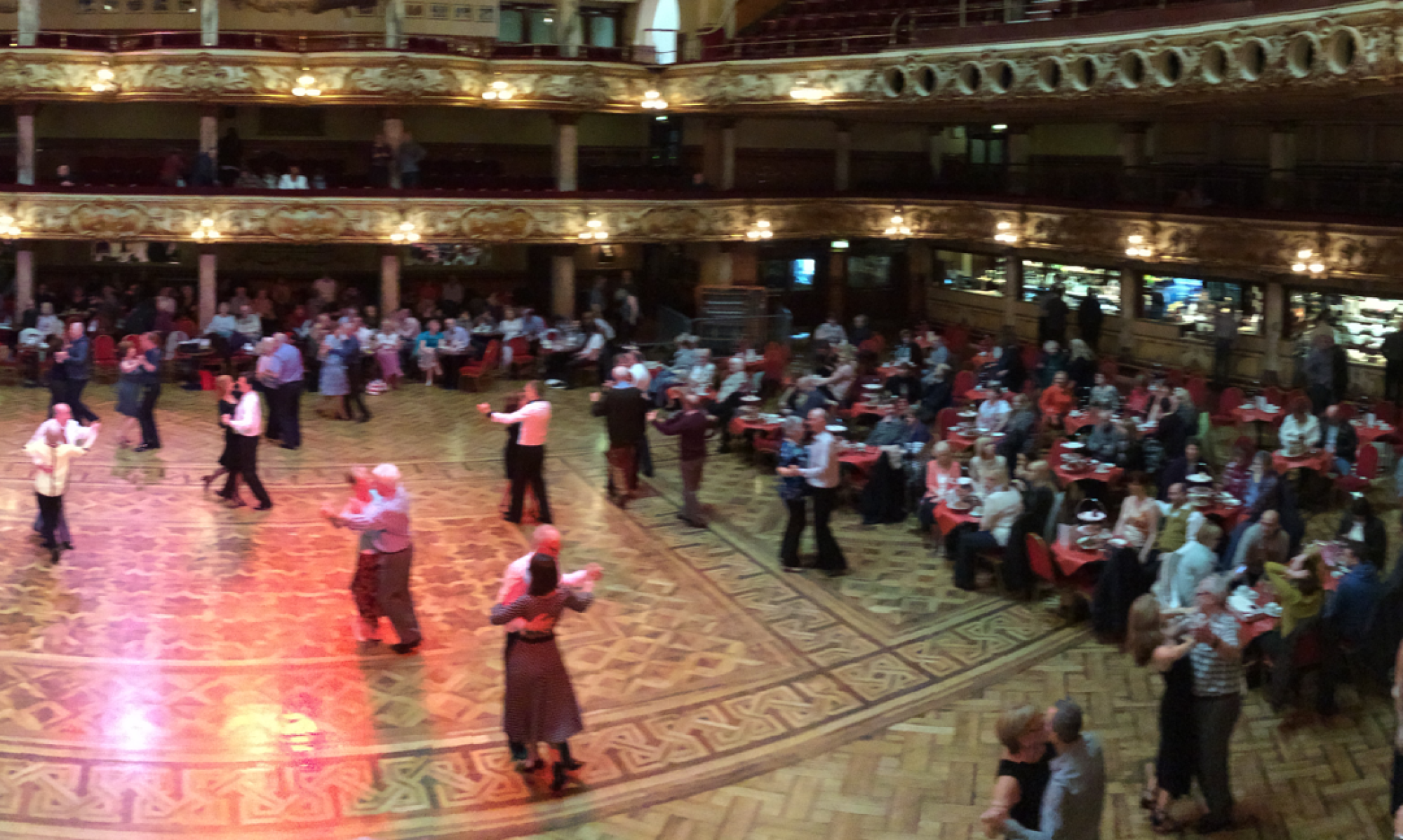Whole body is working in figure 8 (not just hips). It creates the characteristics of the dance. It is about the internal state of the body. Anytime an external part is moved, think about how it’s created using internal part of body. Core movements are connected to all external movements.
3 different isolation used in Figure 8:
- Twisting (Practice with feet together. Straight knees.) Twist left and right. This action is most important. A lot of power. Really stretch (on 41). Get deeper in the action.
- Twisting is when turn commences in hips only.
- Rotational: hip rotates around spine.
- Twisting in Latin dances is often associated with leg movement.
- This is also the action for “settling” which happens on straight leg, on “&” beat. It commences hip movement, it often causes the other foot to move horizontally.
- Compression: (Practice with feet together.) Hip moves laterally. For this exercise, do not allow hip to twist and move back. Squeeze, compress sides.
- You could isolate hips without bending knees. Or, you could allow knees to bend.
- Compression creates a high hip on the compressed side. Compression is used when “settling” on the standing leg, doing figure 8, when doing swivel/hip twist turns.
- When compressing one side, that side’s energy should be going up (not down), think about “opposition”.
- Lateral: Hips move to left and right with minimal rotation. Some dancers dance Cha Cha Chasse using lateral movement. 4&: the 2 steps have equal weight distribution.
- Pendulum swing action: proper compression will create the pendulum action.
- In practice, allow knee to bend, it creates more space.
- In Latin dances, pendulum action is associated with weight/spinal transfer.
“Cuban motion is the result of bending and straightening the knees” – a simple way of describing it in some studios when teaching beginners. Use muscle in the core to develop proper figure 8 action as described in details below.
Figure 8 – Both Hip and Rib Cage
The figure 8 action should be going on through out the dance. Body needs to be active at all times. It could be slowed down, but not stopped. Both hips and upper body (rib cage) has figure 8 actions. Rib cage figure 8 is layered with the hip figure 8 action. Upper body should feel more free, not constrained, stiff.
Hip Figure 8 Action
- Start with feet apart, straight legs. Compress on the left side, which creates L hip high, R hip low.
- Twisting: Keep the compression, then twist, still has L hip high, R hip low. Hips are on diagonal. This creates internal space. Do not allow rib cage to rotation with hip. When you twist and take left hip back, take left shoulder forward (not back) in opposition.
- Pendulum diagonally forward to right. Fill the internal space with body action. Now, R hip is high, L hip is low. Don’t clip this short and start twisting early. To make action full with more power, finish pendulum action to create more circumference.
- The default movement is to not do ribcage displacement, pendulum and transfer weight at the same time, the spine and hip arrive on right foot together.
- As a choice and for effect, one could choose to do ribcage displacement (moving ribcage first to right and delay pendulum action) – but do not use this as default movement.
- Compress on the right side, just having R hip even higher. Transfer full weight on RF.
- Twist to right and back.
- Pendulum diagonally forward to left. (When there is a partner, the partners are working “in” toward each other. Keep body weight forward.) [Repeat]
Upper Body (Rib Cage, Torso) Figure 8 Action
For this exercise, keep hips still, only move rib cage.
- Move left rib cage, diagonally forward, then to left side, then back. Then, immediately to the second half on right side next.
- Move right rib cage, forward, side, back.
Combining Hip and Rib Cage Figure 8
Hip and rib cage figure 8 goes in opposition. Body works in diagonals – diagonal stretch, e.g when R hip to to R side, L rib cage to L side – opposition, diagonal.
- When R hip rotates back and around, L rib cage expands and stretches forward
- Then they meet in the middle.
- Then L hip goes back and around in figure 8, R rib cage stretches forward
- Repeat.
Apply all this in Rumba Cucarachas. It’s important to make sure upper body do not tense up. Upper body is soft.
